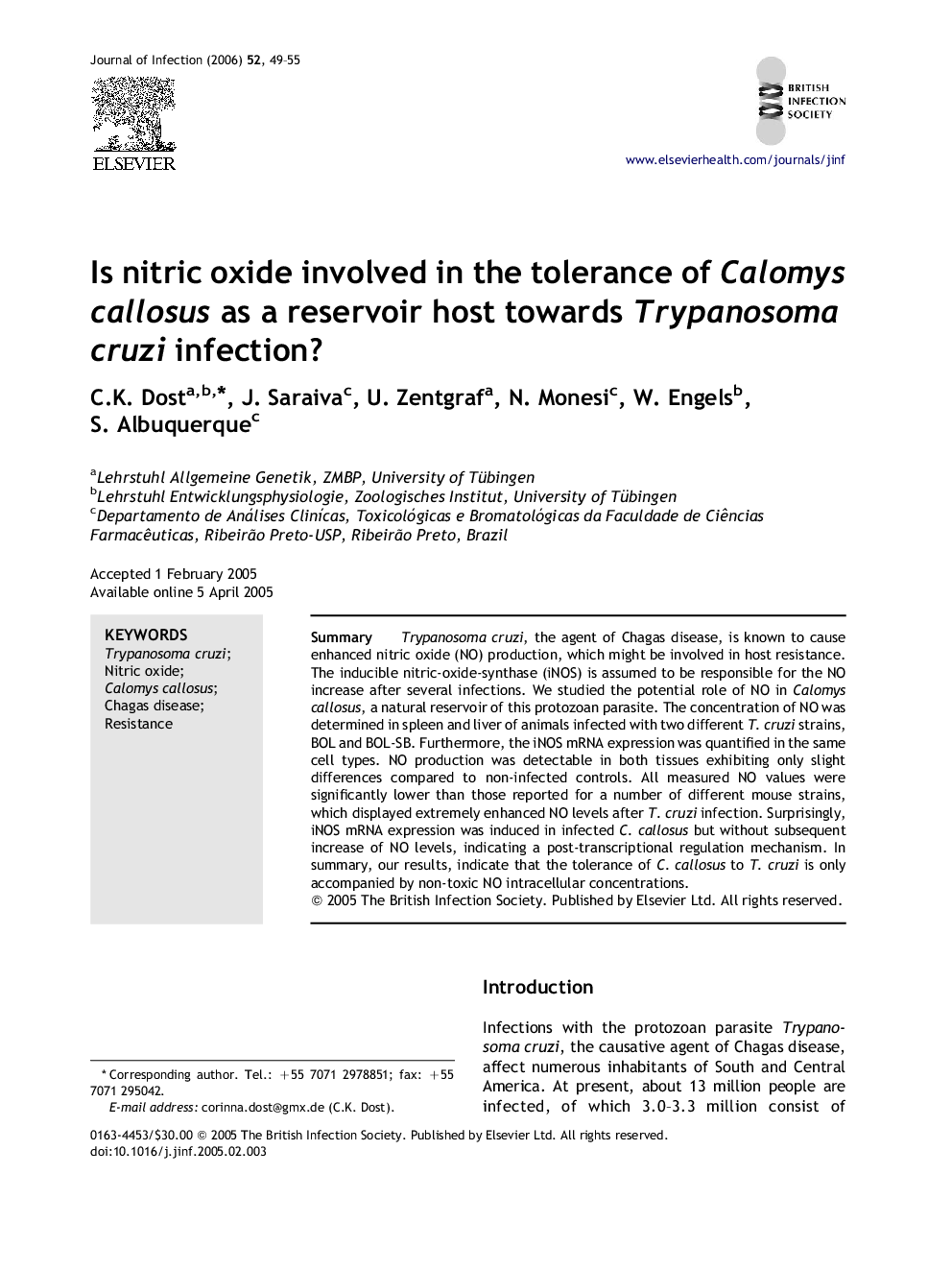| Article ID | Journal | Published Year | Pages | File Type |
|---|---|---|---|---|
| 3376147 | Journal of Infection | 2006 | 7 Pages |
Abstract
Trypanosoma cruzi, the agent of Chagas disease, is known to cause enhanced nitric oxide (NO) production, which might be involved in host resistance. The inducible nitric-oxide-synthase (iNOS) is assumed to be responsible for the NO increase after several infections. We studied the potential role of NO in Calomys callosus, a natural reservoir of this protozoan parasite. The concentration of NO was determined in spleen and liver of animals infected with two different T. cruzi strains, BOL and BOL-SB. Furthermore, the iNOS mRNA expression was quantified in the same cell types. NO production was detectable in both tissues exhibiting only slight differences compared to non-infected controls. All measured NO values were significantly lower than those reported for a number of different mouse strains, which displayed extremely enhanced NO levels after T. cruzi infection. Surprisingly, iNOS mRNA expression was induced in infected C. callosus but without subsequent increase of NO levels, indicating a post-transcriptional regulation mechanism. In summary, our results, indicate that the tolerance of C. callosus to T. cruzi is only accompanied by non-toxic NO intracellular concentrations.
Related Topics
Life Sciences
Immunology and Microbiology
Applied Microbiology and Biotechnology
Authors
C.K. Dost, J. Saraiva, U. Zentgraf, N. Monesi, W. Engels, S. Albuquerque,
